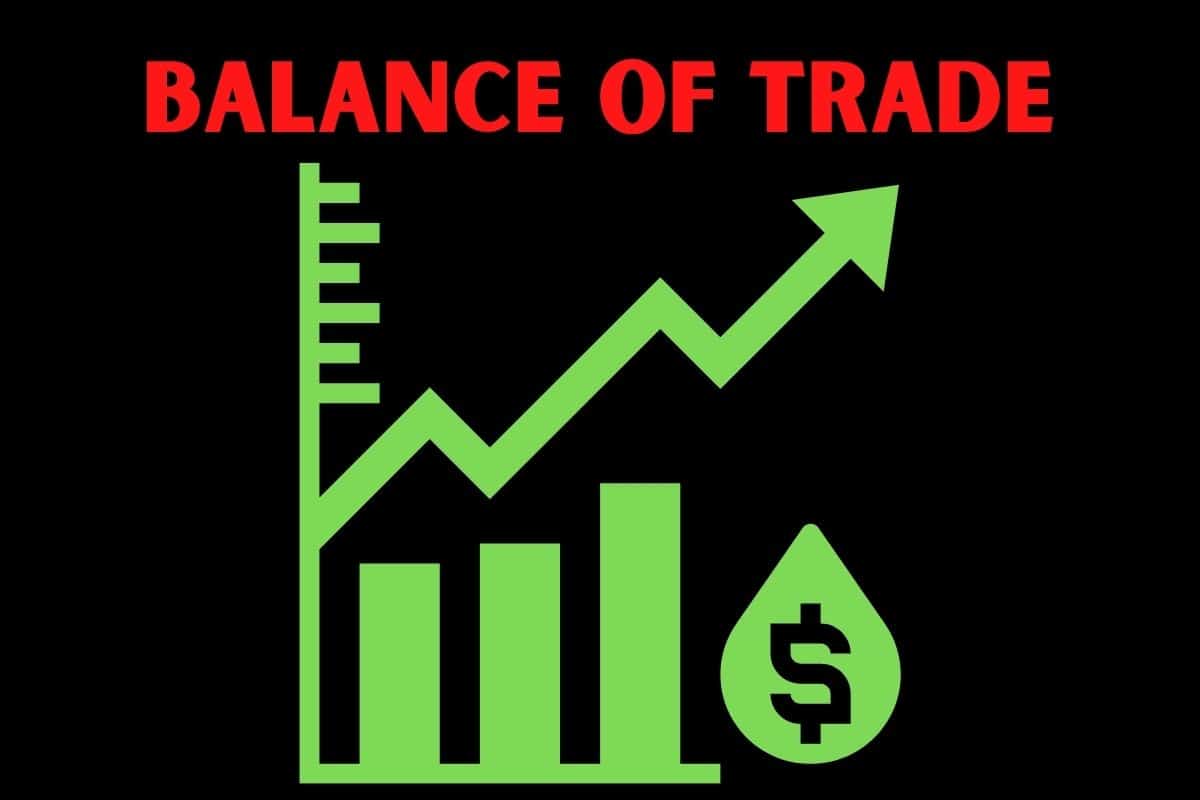If you want to increase traffic to your blog, you should think about using paid ads.
What’s the issue? There are many sites to select from, and you’ve definitely either lost money on paid ads yourself or know someone who has.
Paid advertising can be one of the most successful methods of driving traffic (and purchases), but only if you understand how it works. This guide will explain what paid advertising is, the many platforms available, and whether or not they are worthwhile. Finally, if you aren’t quite ready to dig in, we’ll go over various paid ad alternatives.
Here’s what you need to know before creating your first paid ad.
What is Paid Advertising?
Every type of online advertising that a marketer or business pays for is considered paid advertising. With paid ads, companies are essentially renting a place on a platform with their target demographic and advertising their offer.
How Does Paid Advertising Work?
Most paid ad networks employ a bidding process in which you enter your maximum bid per ad and the platform’s algorithm places it in available slots. Algorithms differ greatly from platform to platform, but most will consider the quantity of your bid as well as the quality of your ad.
How you now rank in search — as well as how your competitors rank — is a crucial component of your paid ad strategy. Especially since all of these elements will affect your cost per click (CPC).
What is the ultimate objective? Obtain the most clicks at the lowest CPC to optimize your money.
Once your ads are set, there are two ways they might be presented, depending on the ad kind. Search ads are activated when a user enters a specific keyword that fits your ad, whereas display ads are triggered when a user meets your targeting parameters while browsing other sites.
Types of Paid Advertising
There are various types of paid ads. Let’s take a look at the various types of paid ads you might use and how they look.
#1. Search Ads
When consumers input a query into a search engine like Google or Bing, search ads appear in the search results. Companies bid on keywords they wish to rank for and then pay for each click. Certain keywords have a lot of competition (and therefore expensive.)
To get the most out of search ads, target terms with higher buyer intent, which means consumers are more likely to convert.
#2. Display Ads
On websites all across the internet, display ads appear. For example, if you go to your favorite blog or news site, you’re likely to encounter ads for products and services.
Display ads can be used to promote your site on other websites or to monetize your own site.
#3. Social Media Ads.
Social media advertising is paid adverts that appear on social media platforms such as Facebook, Reddit, Twitter, and Instagram. They have a broad reach and can be precisely targeted, making them one of the most effective types of paid advertising.
It’s important to keep in mind that social media ads can appear in a variety of areas, including sponsored posts, feeds, Instagram stories, and more.
#4. Email Sponsored Ads
Email-sponsored ads are paid advertisements that appear in users’ inboxes without sending an email.
Email ads, unlike email marketing, can be distributed to users even if you do not have their email addresses.
#5. Google Shopping Ads
Google shopping ads are search ads that display when people search for terms linked to specific products and have a high intent to buy. Images, pricing, and reviews are all included in Google shopping ads.
In some circumstances, Google Shopping ads might be free if your product pages are properly formatted. Otherwise, you’ll be charged for each click.
#6. Instream and Video Ads
Video ads appear at the start of videos, whereas instream ads appear in the middle of a video. Adults in the United States spend an average of 103 minutes a day watching digital videos, thus video ads can reach a large audience.
#7. Native Ads
Native ads are paid adverts that are relevant to the content of a website. They appear to be content rather than advertisements. Native ads can take the form of sponsored blog entries, infographics, or even films.
#8. Remarketing and Retargeting
Remarketing and retargeting ads are two methods for targeting your ads. Retargeting ads target consumers based on behavior rather than demographic information such as geography, age, or wealth.
Retargeting ads can be shown to users who have visited your website, downloaded a lead magnet, or even added an item to their cart.
Benefits of Paid Advertising
Paid ads cost money, however, SEO and social media sharing don’t. Is the investment worthwhile? It might be. The advantages of paid ads are listed below.
#1. Reach Your Specific Audience
Other advertising initiatives, such as social media and SEO, do not allow you to control your audience. You can post the type of information you believe users will appreciate, but you have no influence over whether or not they see it.
With paid ads, you can tell Google (or Facebook, Instagram, Bing, and so on) exactly who you want to target. You might wish to reach out to men who are:
- 30 to 45
- Living in the United States
- Likes to football
- Earn more than $100,000 annually
Being able to define your audience makes it easier to grow fast – which is the next benefit.
#2. They are Faster
Do you want to release a new product tomorrow? You can gain eyes on your site tomorrow with paid ads. Paid ads reach your audience as soon as you click “create ad,” unlike SEO, social media, and email marketing.
SEO and other marketing activities are excellent for long-term success, but paid ads help bring people more quickly.
#3. Success Is Easier to Measure
Paid ads allow you to track users’ paths to your website or product pages. This means you can observe which ads bring users to your site and what they do once they’re there.
SEO and social media marketing are important, but it is difficult to track whether posts or modifications have an influence on traffic. You can observe which ads are delivering results with PPC.
Examples of Paid Advertising Channels
You now understand some of the precise language associated with paid ads, as well as when and how they should be used. Now comes the big question: where do you use them? That response may vary depending on your audience, your budget, and your goals, but there are many possibilities to try and experiment with.
#1. Search Ads
Of course, we all know that Google is the big player here, accounting for more than 92 percent of the entire search engine market share.
But, other search engines offer options to promote to your chosen demographic.
Google Ads
Indeed, there are other search engines, but none of them are as powerful as Google. Whatever you search for, from pizza and hot yoga to earrings, your first — and sometimes first 3-5 — results will be ads.
Google ads are always clearly marked with the bold “Ad” designation. Ads can appear in a sidebar or a carousel.
Bing Ads
Bing is a distant second in the search engine race, but it still conducts a lot of paid search business. Like Google ads, Bing ads display in the top position(s) and occasionally in a sidebar. Although Google ads are labeled on the left, Bing ads are labeled on the right.
#2. Social Media Paid Advertising
As previously stated, one of the keys to paid advertising is to be present where your target audience is. There’s no better place to accomplish it than at the place where they’re bound to spend a lot of time — social media.
Social media paid advertising on both desktop and mobile platforms has seen remarkable growth in revenue over the past few years.
To select the appropriate social platform, you must first understand your customer persona and ensure that your brand is prepared to develop dynamic, highly shareable content and engage with followers.
Facebook Paid Advertising
Facebook paid advertising is highly powerful and enables precise targeting of practically any population. It also supports a wide range of formats, from static photos and video ads to ad carousels.
LinkedIn Ads
In general, LinkedIn is an excellent resource for targeting experts in a given area. LinkedIn is extremely useful for B2B and SaaS companies that genuinely understand their market and what their customers want and need.
Instagram Ads
Instagram, another Meta product, allows you to manage ads alongside Facebook ads, allowing you to keep your content consistent across platforms. Alternately, Meta allows you to run them individually if you want to tweak the design or test messaging for different audiences.
Twitter Ads
Twitter ads are an excellent technique to acquire new followers. Why does that matter? Because 93 percent of Twitter users who follow brands intend to buy from them.
#3. Display Advertising
Display advertising is one of the oldest forms of digital paid advertising, and it has survived for so long because it is effective. And when it comes to displaying ads, bigger is always better. Huge banner ads, as well as square ads at the top half of the screen, are often the most effective. Smaller, lower-positioned ads still perform, but not as well.
Native ads, a sort of display ad, are often less intrusive and follow the user experience on a certain website. They blend seamlessly with the site’s identity and appearance, and they rarely stand out as paid advertising.
#4. Influencer Marketing
Influencer marketing is thriving, with 80 percent of marketers claiming it is an effective ad strategy and nearly 90 percent claiming it provides the same or higher ROI than other marketing channels.
When looking for influencers, it’s critical to know exactly what you want and, more crucially, what you can spend. Famous influencers fetch high fees and generate significant cash, but they are not cheap. For many brands, it’s more cost-effective to seek micro influencers — individuals with 10,000 or fewer followers — in your industry.
How To Get Started With Paid Advertising
Not sure where to begin with paid ads? Here are five steps to avoid squandering your money.
- Understand And Use Long Tail Keywords Correctly: Long tail keywords are less competitive and more closely resemble how people search.
- Recognize the Variety of Paid Ads: Each sort of advertisement has a varied cost, audience, and reach. Learn the distinction to avoid wasting advertising dollars!
- Monitor the Performance of Your PAID Ads: If you can’t see how each of your ads is performing, you shouldn’t be buying paid advertising.
- Build a landing page: Landing pages increase conversions and make tracking easier. Don’t forget to include a CTA and conduct A/B testing.
- Examine the Outcomes of Your Paid Ads Often: Monitor your results weekly or monthly to ensure that your ads are generating results rather than merely clicks.
Creating a Paid Advertising Strategy
There is a lot that goes into PPC advertising, and you should not begin your campaigns without a strategy in place, or you may end up wasting a lot of money!
#1. Determine Your Objectives
Prior to beginning anything else in marketing, you must first establish your goals. Who are you attempting to reach? What are you attempting to accomplish, and what do you want this audience to do? What is the outcome?
Various aims and audiences will necessitate different campaigns and ad kinds as well as different platforms. Objectives can be classified based on your buyer’s journey, as customers will require different things depending on where they are in the process.
- Awareness: When someone is still investigating and is aware that they have an issue or a need but don’t know much about it, they are said to be in the awareness stage. The purpose of this will be to reach more individuals and make them aware of your products or services. This is commonly assessed by impressions (how many people saw your ads) and clicks (how many people were intrigued and clicked through to learn more). It can also be monitored through engagement metrics, which show how many people interacted with your ad by liking a post or viewing a video, for example.
- Consideration: This is when someone has clearly identified their problem or demand and is now examining the possibilities available to remedy or fulfill it. To measure this, you may still look at clicks to your website as well as what activities visitors made once on your site. Did they fill out a form to download a guide or go to other pages to learn more?
- Determination: This is when someone has determined how they will solve their problem or meet their need and is seeking an organization that will do it for them. This is typically quantified in terms of conversions: Did they contact you or buy from you?
#2. Recognize Your Audience
Knowing your goal is important, but knowing who you’re aiming towards is even better. You should conduct some research to learn about your target customers. This can be done by creating personas that are semi-fictional characters that correspond to your ideal customer. You define them by learning who they are as well as the difficulties and pain areas that will drive them to purchase your products or services.
Understanding your audience is critical for creating effective ads. It will assist you in determining which platforms to use and which to avoid. It will also assist you in selecting the finest targeting options to reach them, and you will be able to create fantastic ads that will appeal to them.
#3. Determine Your Budget
You need to know how much you can spend now that you’ve determined your aim and your target audience. You could already have a precise budget that has been assigned to you, but you’ll need to select where to spend it. We understand that most firms do not have unlimited funds and that their budgets must be maximized for maximum return.
The biggest mistake most firms make is spreading their budget too thinly across platforms or initiatives. They end up being constrained by their budget and seeing no beneficial effects. That is why, rather than trying everything at once, it is advisable to concentrate on one platform or one style of targeting. This allows you to fully commit to maximizing performance. If the results are negative, you can proceed to the next step. Marketing is a game of trial and error.
There are numerous tools available that can provide you with estimations of Cost per Click (CPC) and search volume to determine how much advertising on specific phrases may cost you. While you’re putting up your campaign and selecting targeting choices, advertising platforms will occasionally offer you an idea of how much money you’ll need. Although these are usually very vague, paying attention to them will give you a good idea of what to expect. Nevertheless, you won’t know how much it will cost you until you begin advertising.
Assessing the Effectiveness of Your Paid Advertising
#1. Tracking
If you’re not measuring engagement and conversions from your paid advertising, you’re wasting money! Most PPC advertising networks include some type of tracking, typically in the form of a tag or pixel that you must integrate into your website. This enables the advertising platform to collect data about the individual who clicked your ad once they’re on your website and present it in their analytics report.
It is critical to implement this tracking accurately and completely because it will provide you with essential data on the performance of your ads. Some platforms, such as Google, will even begin optimizing your campaigns for you; if they notice a specific term receiving more conversions, Google’s machine will push your ads for this phrase more frequently in order to boost the number of conversions. It is in their best interests to demonstrate the value of their platform to you!
In order to track visitors from your multiple advertising networks, you should also make sure that your main analytics platform is equipped to do so. The majority of organizations utilize Google Analytics, however, there are alternative solutions available, such as Adobe or HubSpot. Make sure your ads are utilizing the correct UTM codes, and if possible, connect your analytics platform to your advertising platform. This ensures that both platforms understand one other and present a complete picture of a user’s journey.
#2. Key Performance Indicators
Remember the objectives and goals you had to set up earlier? When evaluating the effectiveness of your campaigns, keep these in mind. It’s easy to become overwhelmed by the number of analytics your advertising platform displays. Pay attention to the measures that will help you achieve your goals – your Key Performance Indicators, or KPIs.
If you want to obtain conversions (not just sales, but also signups, downloads, and so on), you shouldn’t be concerned with how many likes a post earned, but rather with the clickthrough rate and the conversion rate. Are customers persuaded to click through to your website, and are they enticed to buy once they’re there? You can then choose which metric to improve. If your clickthrough rate is low, try modifying your ads. If your conversion rate is low, you should analyze your landing page.
Paid Advertising Alternatives
Paid advertising is a quick and effective technique to increase the number of visitors to your site and, as a result, the number of conversions. It can also supplement your SEO strategy on competitive terms and broaden your reach to different audiences. But, not every business has a large budget to spend on ads, and you may need to discover alternatives to conducting paid campaigns to reach your objectives.
#1. SEO
Search Engine Optimization (SEO) is an excellent method for increasing traffic to your website by targeting relevant keywords for your industry. Although there is no charge to appear in search results, SEO is not free because you must invest time and resources into optimizing your site and content for search engines. Keep in mind that SEO is a long-term game, and it will take some time for search engines to respond to improvements you make to your site.
#2. Organic Social Media
Posting on social media organically – without paying – can be another approach to reaching larger audiences. You must devote effort to generating engaging material that people will want to share and connect with, as well as promote it on a regular basis. Because social media is all about conversations, you’ll need to participate actively in online forums if you want this strategy to work. This is also a long-term game.
#3. Email
Although email may not allow you to reach new people – please don’t buy lists of contacts, it’s spammy and never works – you may nurture your existing contacts with email. Email marketing is commonly regarded as an antiquated channel, but it offers a phenomenal ROI. You’re speaking to folks who have accepted to hear from you, so keep them interested! If you provide them with useful content, they will most likely proceed down the marketing funnel and become a valuable customer.
#4. Events
Organizing or participating in events such as conferences and exhibitions can also help you broaden your target audience. It will be heavily dependent on your sector and the people you are attempting to target, but it is an excellent approach to developing more personal ties with people. Yet, it can be highly expensive, and its reach may be limited.
Conclusion
Paid ads are NOT a get-rich-quick gimmick. Expect it to take more than a week or two. Give your ads time and fine-tune your strategy for the best results. The accumulation of trends and data will provide you with a clearer view of which ads actually convert.
Begin with a minimal budget and expand it as you gain confidence in your paid advertising techniques.
- HOW CAN GOOGLE ADS HELP YOU ADVANCE YOUR BUSINESS?
- SMALL BUSINESS ADVERTISING IDEAS AND COSTS IN 2023
- DIGITAL MARKETING: Definition, Types, and, Strategies
- DISPLAY ADS: What You Should Know as a Beginner
- DIGITAL MARKETING CHANNELS: Most Effective Digital Marketing Channels for Your Business






